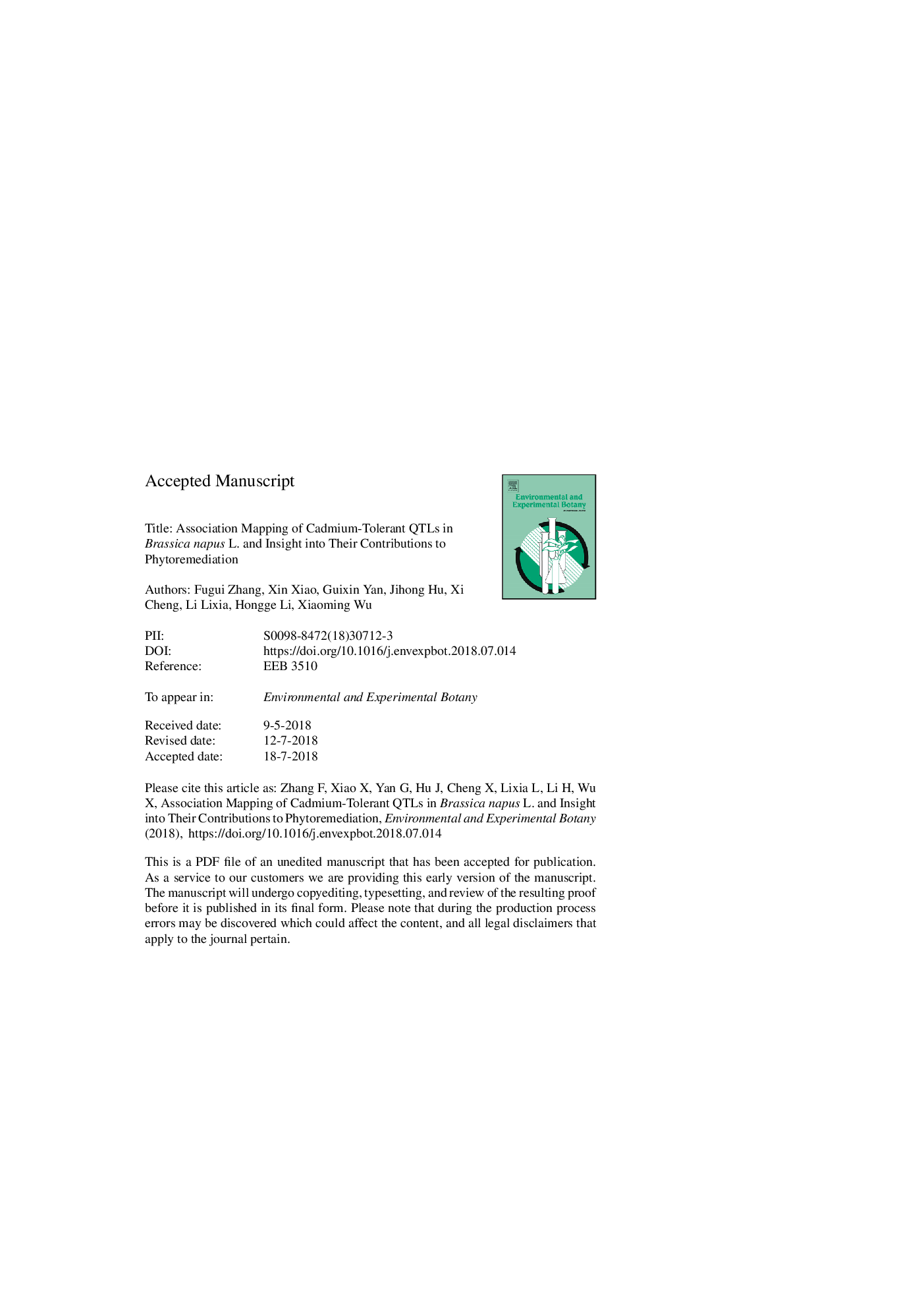| Article ID | Journal | Published Year | Pages | File Type |
|---|---|---|---|---|
| 8886881 | Environmental and Experimental Botany | 2018 | 35 Pages |
Abstract
Cadmium (Cd) contamination in soil is one of the major global environmental issues. Rapeseed (Brassica napus L.), as one of the most important oil crops, bio-energy resources and Cd accumulator, is an ideal plant for phytoremediation. But the Cd tolerance mechanisms in rapeseed are not known. Thus, both phenotypic and genotypic identification of Cd tolerance were conducted in a rapeseed natural population. Twelve Cd-tolerant genotypes were selected among 472 worldwide collection of natural rapeseeds based on the criterion of relative radicle length (RRL) >60%. Nine associated SNPs localized in four QTLs were identified by genome-wide association study (GWAS) in which 60âK Brassica Infinium® SNP array was used. Seven candidate genes for Cd tolerance, including HIPP27, EXPB4, EMB1793 and CDSP32 orthologues, were obtained in these loci. The expression of these genes were induced by Cd stress in Cd-tolerant genotype and reduced or not affected by Cd stress in Cd-sensitive genotype in qRT-PCR assays. These genes may contribute to Cd tolerance in rapeseed through the regulation of cell wall development, metal chelation, detoxification and antioxidant defense, respectively. In addition, we suggested that Cd tolerance in rapeseed could be improved by gene pyramiding, as our study has demonstrated the additive effect in both intra- and inter-QTL. Collectively, these findings could provide several breeding materials for producing Cd-tolerant rapeseeds that could be utilized in phytoremediation of heavy Cd polluted field.
Related Topics
Life Sciences
Agricultural and Biological Sciences
Ecology, Evolution, Behavior and Systematics
Authors
Fugui Zhang, Xin Xiao, Guixin Yan, Jihong Hu, Xi Cheng, Lixia Li, Hongge Li, Xiaoming Wu,
